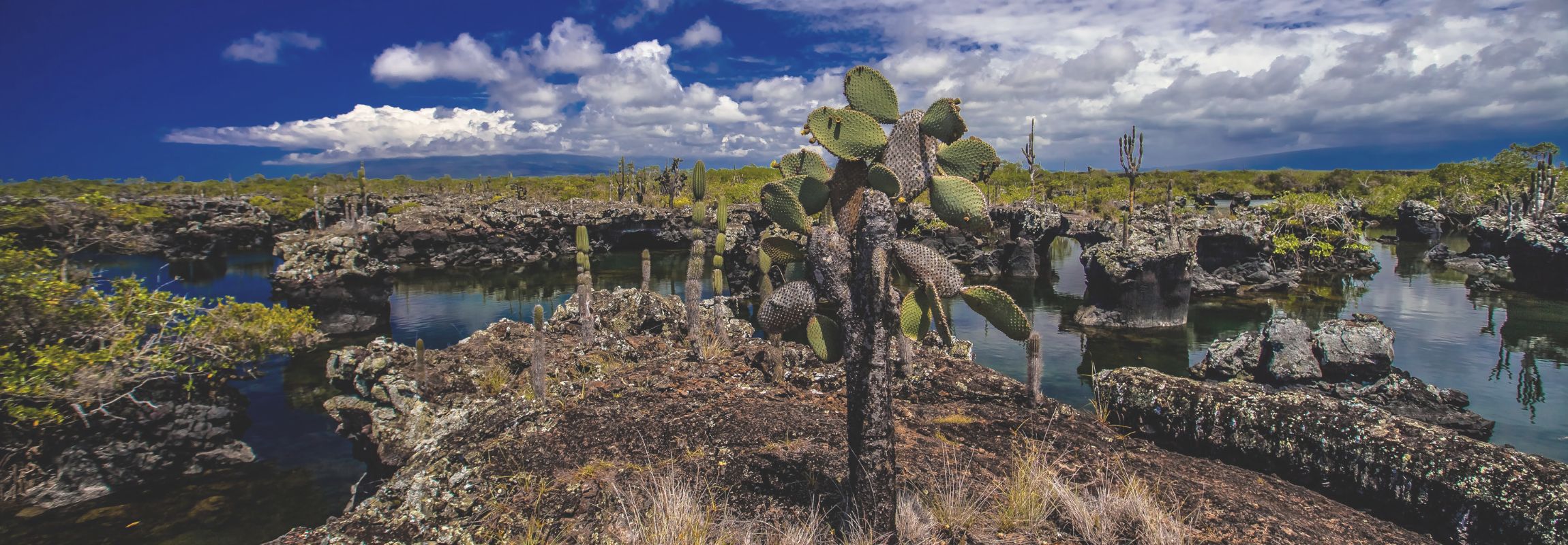
Isabela Island Guide – What to Do in Isabela Island on Your Own
Welcome to our comprehensive Isabela Island Guide! This captivating island in the Galapagos Archipelago holds a fascinating history and an abundance of natural wonders to explore. Originally named Albemarle Island for the Duke of Albemarle by Ambrose Cowley in 1684, it was later named Isabela Island after the Spanish Queen Isabella of Spain, becoming its popular and political name. As the largest gem in the Galapagos archipelago, Isabela Island offers a unique and enriching experience for visitors.
Start your adventure in Isabela
Nestled in Isabela Island, the heart of Puerto Villamil beats as the island’s main port and gateway. Despite its size, this charming town offers an array of amenities and attractions to enhance your island experience. Explore its streets, teeming with enticing restaurants serving fresh seafood and local delicacies. Beyond Puerto Villamil, thrilling adventures await, as you discover Isabela Island’s extraordinary wildlife and natural wonders. Immerse yourself in rugged trails and marvel at the dramatic volcanic landscapes that unfold. Whether you seek tranquility or excitement, Isabela Island welcomes you with warm hospitality and unparalleled natural beauty. Let our Isabela Island Guide be your trusted companion, providing the information and inspiration you need to create unforgettable memories during your visit.
Isabela Island Most Important Information at a Glance
- Population: Isabela Island in the Galapagos archipelago is home to approximately 2,000 residents, proudly claiming the title of the second smallest population among the islands.
- Size: As the largest island in the Galapagos, Isabela spans 4,588 square kilometers (1,770 square miles), encompassing diverse ecosystems of volcanic landscapes, lush highlands, and pristine beaches.
- Location: Isabela Island is situated in the western part of the Galapagos, about 1,000 kilometers (620 miles) off the coast of mainland Ecuador. Its dramatic volcanic terrain and unique flora and fauna are shaped by the confluence of three tectonic plates.
- Main Town: Puerto Villamil serves as Isabela’s main town, a charming coastal village with stunning ocean views and a relaxed atmosphere.
- Economic Activities: Isabela’s economy thrives on tourism and fishing, attracting visitors worldwide with awe-inspiring landscapes and abundant wildlife. Sustainable fishing practices support the local community.
- Conservation Efforts: Much like the rest of the archipelago, Isabela Island showcases exemplary conservation efforts. Collaborative initiatives between organizations and the local community protect its unique biodiversity and fragile ecosystems. Measures include invasive species control and sustainable tourism practices.
- Wildlife: Encounter iconic Galapagos species like giant tortoises, marine iguanas, flightless cormorants, and Galapagos penguins, as well as diverse marine species found nowhere else on Earth.
- Natural Sites: From the majestic Sierra Negra volcano with its expansive lava fields and breathtaking panoramas, to the enchanting Tunnels, where collapsed lava tubes create captivating snorkeling opportunities. Don’t miss the pristine beaches near the Tortoise Breeding Center and Isabela Beach in Puerto Villamil.
- Transportation: Exploring Puerto Villamil is primarily done on foot or by bicycle, given the small size of the town. Taxis are available for longer distances, while guided tours and small boat rentals allow visitors to experience the island’s natural wonders.
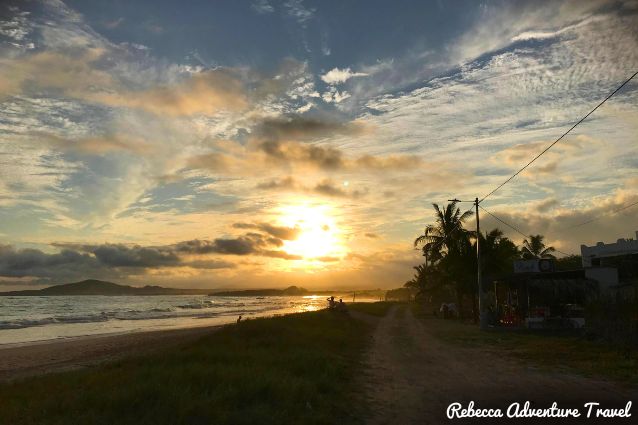
Isabela Island.
Getting to Isabela Island
To reach Isabela Island, travelers have two options. They can choose a swift inter-island flight from Baltra Airport to Isabela’s airport in Puerto Villamil. Alternatively, upon arriving at Baltra Island, visitors can embark on a short ferry ride across the Itabaca Channel to Santa Cruz Island. From there, they can continue their journey with a scenic two-hour speedboat ride through the Galapagos marine reserve, connecting Puerto Ayora on Santa Cruz to Puerto Villamil on Isabela. It’s advisable for travelers to take a seasickness tablet beforehand, as the sea conditions can get bumpy at times.
Isabela Island Geological History
Isabela Island, the youngest and largest in the Galapagos archipelago, spans 120 kilometers and 1,771 square miles. Formed by the merging of six shield volcanoes – Alcedo, Cerro Azul, Darwin, Ecuador, Sierra Negra, and Wolf – Isabela is one of the world’s most volcanically active regions. Nestled in the western Galapagos, Isabela Island showcases the fascinating interplay between geology and life. Its diverse landscapes, from scorched lava fields to lush highlands, host a rich biodiversity. Iconic Galapagos species and unique creatures thrive in this volcanic sanctuary. Isabela Island invites adventurers to discover its volcanic wonders and embrace nature’s resilience. From dramatic lava flows to vibrant greenery, every corner reveals the intricate tapestry of life.
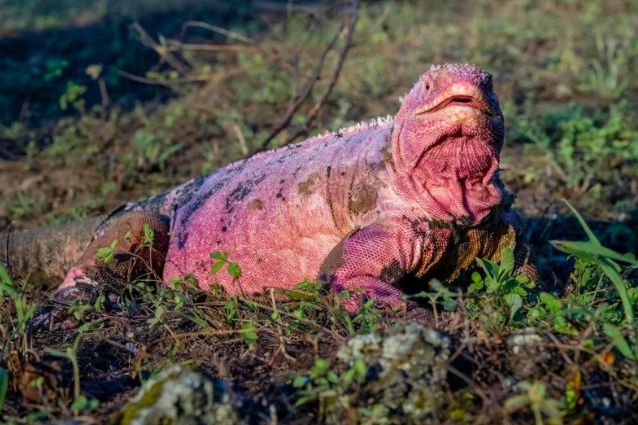
Pink Iguana.
Things To Do in Isabela Island – Sites Guide
During your trip to Isabela Island of the Galapagos archipelago, you’ll have the opportunity to engage in self-guided activities. To ensure you make the most of your visit, Rebecca Adventure Travel will provide valuable assistance and important information about the must-see places and how to reach them.
NOTE: Refer to the map at the end of the Isabela Island Guide to locate all the sites.
Arnaldo Tupiza Breeding Center
Located 1.5 km from Puerto Villamil, the Tortoise Breeding Center on Isabela Island is easily accessible by taking a short walk or taxi. This center plays a crucial role in the reproduction of tortoise populations from various regions of South Isabela. Notably, the tortoises from Cerro Paloma exhibit distinct genetic characteristics, with only two surviving females, one of which is infertile. However, in 1998, the second female successfully nested and hatched nine Galapaguitos of Cerro Paloma, marking an important milestone.
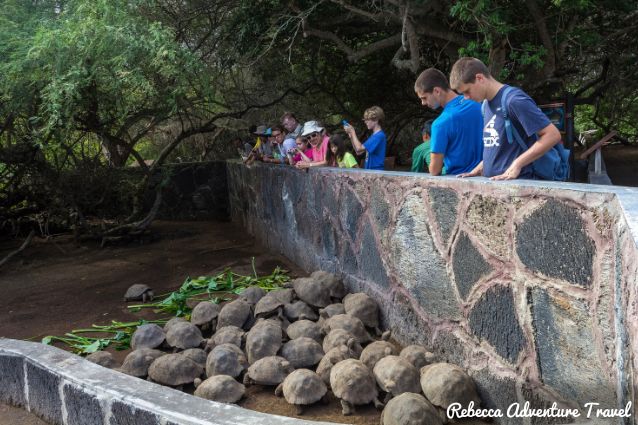
Arnaldo Tupiza Breeding Center.
The Wall of Tears
Situated 6 km west of Puerto Villamil, the Wall of Tears holds great historical significance. Constructed between 1945 and 1959 by prisoners of the penal colony, the wall stands as a testament to the hardships endured during its construction, resulting in numerous casualties. Locals aptly refer to it as the “wall of tears” due to the lingering cries and heavy atmosphere. While the hike to reach the site can be demanding, renting a bike for a full day, priced at approximately $20 to $25 USD per person, is a recommended option.
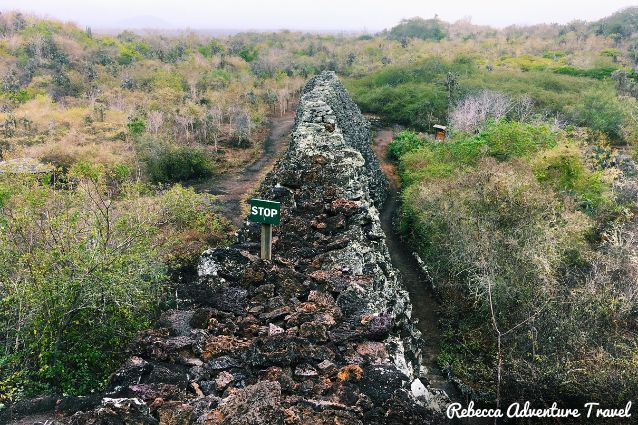
Wall of tears at Isabela Island.
Flamingo Lagoon
Punta Cormorant is home to the largest coastal lagoon in the Galapagos Islands, known as Flamingo Lagoon. It serves as a vital reproductive site for the majority of flamingos in the region. To catch a glimpse of these magnificent birds wading through the shallow waters, we suggest visiting the lagoon at sunrise. Alongside the flamingos, other fascinating shorebirds, including pintail ducks, stilts, and large-billed flycatchers, can also be observed in this remarkable habitat.
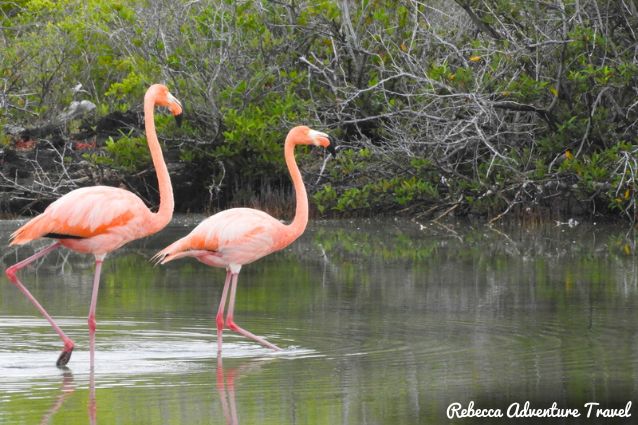
Flamingo Lagoon.
The Malecon and Isabela Beach
Isabela Island distinguishes itself with its extensive beachfront, conveniently located just one block away from the main plaza of Puerto Villamil. This beautiful 2.5 km long white sand beach invites visitors to swim, snorkel, or simply take a leisurely stroll along its captivating shores.
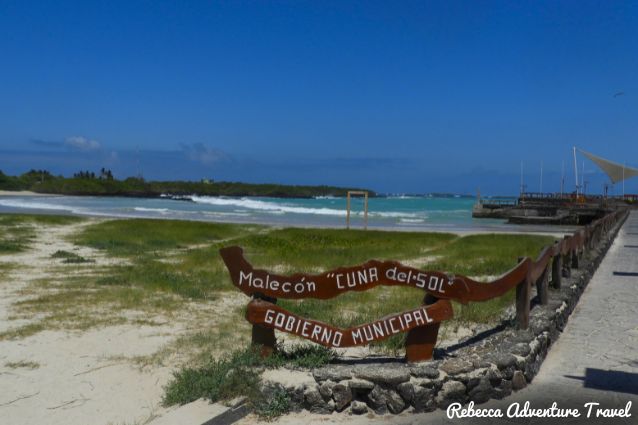
Isabela Island Malecón.
Concha Perla
To reach Concha Perla, head towards the northern end of the main road in Puerto Villamil, approximately 2 km from the town center. A wooden pathway leads you through mangroves to this enchanting spot. Concha Perla offers a shallow bay, ideal for swimming and snorkeling. Renting snorkel gear from one of the shops in town for a modest fee of 5 USD allows you to explore the vibrant marine life, including colorful fish, playful sea lions, sea urchins, starfish, and if you’re fortunate, the occasional Galapagos Penguin.
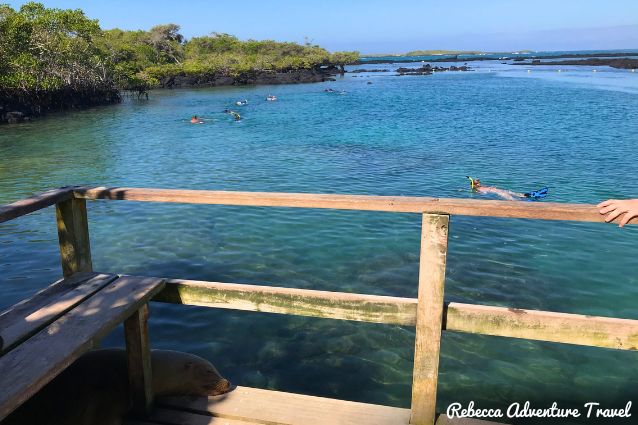
Concha de Perla.
Las Tintoreras
Not far from Concha de Perla, lies the enchanting Tintoreras islet. Its name derives from a large crack where white-tip sharks, known as Tintoreras, seek refuge and rest on a daily basis. Here, a remarkable display of wildlife awaits, with penguins, sea lions, and marine iguanas gracing the scene. Snorkelers can immerse themselves in the vibrant world of colorful tropical fish while basking in the beauty of Isabela Island’s pristine beaches. The island’s lunar-like landscape, characterized by stark black and grey tones, evokes an otherworldly ambiance, devoid of much plant life.
As the pathway unfolds, it leads to an overlook where a crack in the lava has formed a small pool, attracting white-tip reef sharks seeking a peaceful respite. The park has conveniently positioned an overlook, allowing for effortless observation of these graceful creatures as they leisurely rest near the sandy bottom. Towards the end of the path, a sandy beach serves as a sanctuary where sea lions gather for their slumber.
Keep in mind: It is advisable to wear sturdy hiking shoes to navigate the rugged terrain, as broken and sharp rocks abound. Vigilance in watching your step is essential.
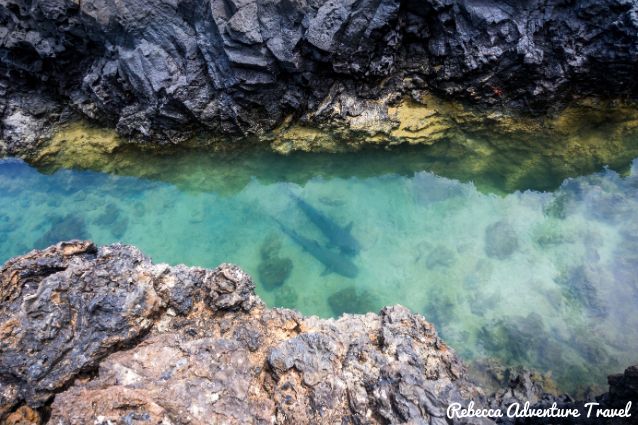
Tintoreras creek.
Elizabeth Bay
To the west of Isabela Island lies the delightful Elizabeth Bay, accessible only by dinghy due to landing restrictions. Here, the Marielas islets are home to a large colony of Galapagos penguins, while the bay itself houses a group of majestic marine iguanas. Snorkelers will delight in the diverse underwater wildlife, including sightings of white-tip sharks and graceful green turtles. Spotted eagle rays and golden rays gracefully glide through the waters. Kayaking in Elizabeth Bay is highly recommended, and some Galapagos hotel packages may offer this exciting option.
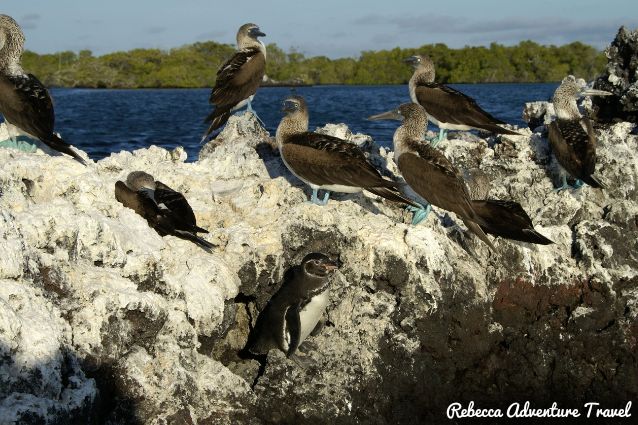
Blue-footed boobies in Elizabeth Bay.
Minas de Azufre
Hiking enthusiasts will relish the opportunity to explore Minas de Azufre on Isabela Island. These sulfur mines, once in operation, offer a scenic trail from the base of Sierra Negra Volcano. Along the way, keep an eye out for an array of captivating bird species, including hawks, paradise flycatchers, and martins. For those seeking an active adventure, Minas de Azufre consistently ranks among the top activities on Isabela Island.
Los Tuneles
This captivating site offers a unique opportunity to snorkel and immerse oneself in the vibrant marine life beneath the water’s surface. Here, an array of tropical fish, eagle rays, lobsters, sea lions, and turtles grace the crystal-clear waters, creating a mesmerizing spectacle. As you explore the depths, you’ll encounter a mosaic of geological marvels, with lava formations sculpted into graceful arches.
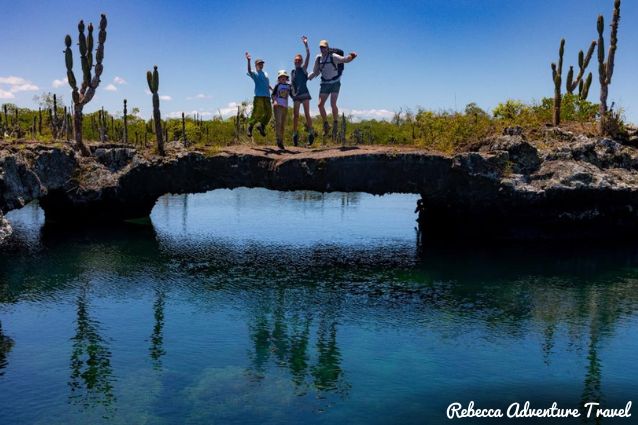
Family exploring Los Tuneles in Isabela Island.
Isabela’s Wetlands
Nestled near Puerto Villamil, the Isabela Wetlands beckon as a must-visit destination on Isabela Island, boasting an intriguing diversity of bird species. This captivating ecosystem comprises mangroves, swamps, and lagoons, providing a haven for a remarkable array of avian inhabitants. Among them, are gallinules, common stilts, and whimbrels that grace the wetlands with their presence.
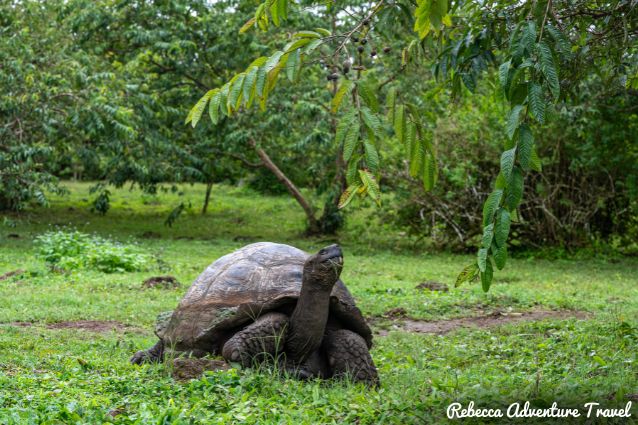
Isabela’s wetland.
Sierra Negra Volcano
The remarkable Sierra Negra volcano on Isabela Island boasts one of the world’s largest craters. With a staggering diameter of around 9 kilometers (5.6 miles), its immensity is best grasped from guided tour vantage points.
Important: You cannot visit Sierra Negra without a certified Galapagos guide. Half- and full-day guided tours to the volcano can be arranged by Rebecca Adventure Travel. Exploring its captivating wonder and trekking along the crater’s edge is an unforgettable experience. Expert guides share insights into the geology and volcanic processes during the approximately four-hour walking tour.
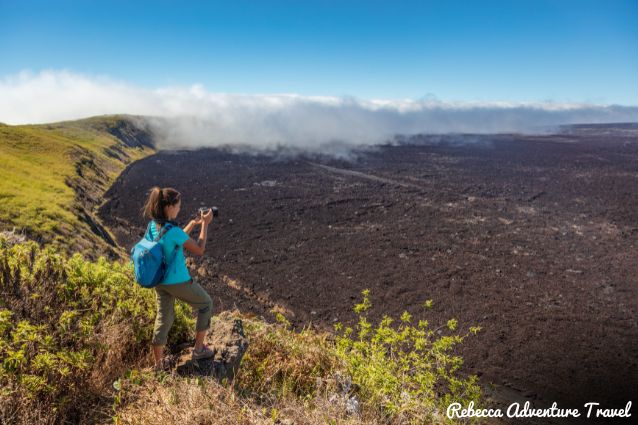
Sierra Negra volcano.
Where to Eat in Isabela Island – Restaurant Guide
During your tour, you’ll have the opportunity to explore Isabela Island at your own pace and indulge in some free time. Treat yourself to a delightful Galapagos meal, whether it’s at a local eatery, alongside friendly locals, or with your companions. To assist you in your culinary adventures, Rebecca Adventure Travel has conducted thorough research to compile a list of the finest dining establishments in town.
NOTE: To easily locate these recommended restaurants, please refer to the map provided at the end of the Isabela Island Guide.
Booby Trap Cafeteria and Bar
Renowned for its exceptional coffee, charming ambiance, and delectable cuisine, this open-air restaurant is situated across from Casa Rosada and boasts a picturesque ocean view. Unwind with a glass of wine or a cocktail while marveling at the breathtaking sunset.
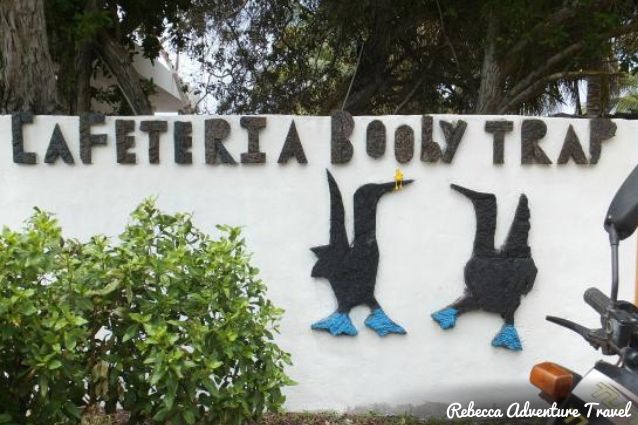
Booby-trap restaurant
Coco Surf
Immerse yourself in the refreshing ocean breeze as you dine at one of Isabela Island’s premier restaurants. Alongside mouthwatering seafood and flavorful rice dishes, Coco Surf is celebrated for its outstanding cocktails, making it a must-visit spot in Puerto Villamil.
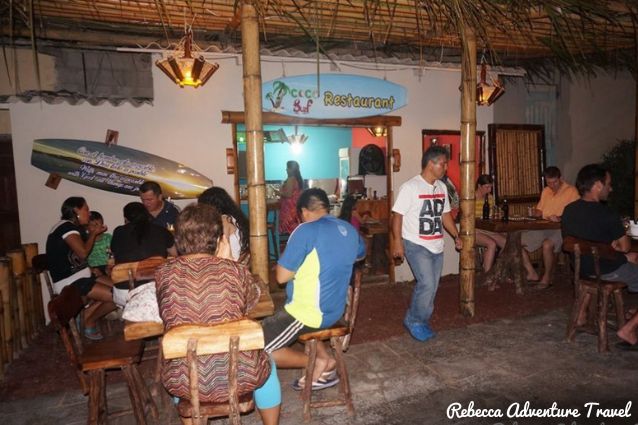
Coco Surf restaurant in Isabela.
La Casa de Marita
At La Casa de Marita’s restaurant, savor a delightful fusion of Ecuadorian, Peruvian, and international flavors. Each dish is meticulously prepared using organic or locally sourced ingredients from the island and the Marita Orchard. Indulge in a daily buffet breakfast and relish delicious main courses for lunch and dinner.
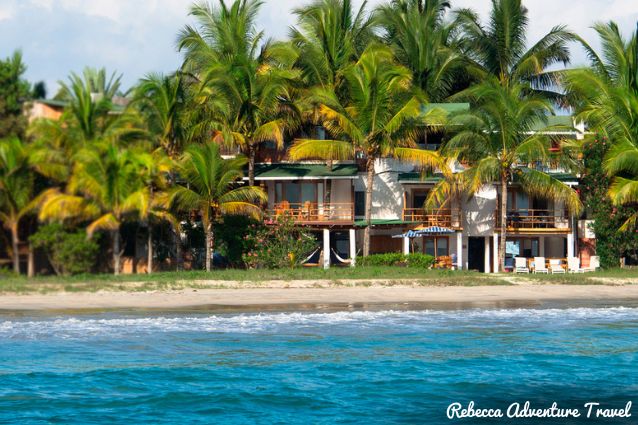
Casa Marita.
El Cafetal Galápagos
Famous for its delectable cuisine and warm hospitality, this restaurant offers a diverse menu featuring an array of rice, yuca, vegetables, and enticing main courses. Vegetarian options are also available for those who prefer non-meat dishes, although the prices lean towards the higher end.
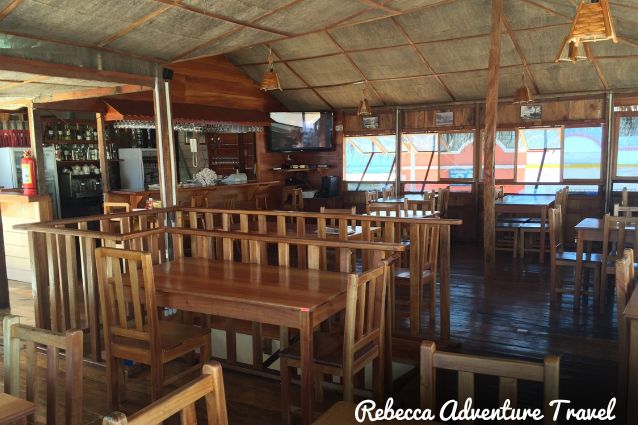
Mockingbird cafe.
El Toque de Melida
For an authentic taste of Ecuadorian cuisine, El Toque de Melida is the go-to destination. Locals flock here for their affordable “almuerzos” (daily set menu), which typically include soup, main course, and juice. Experience the flavors of the region without breaking the bank.
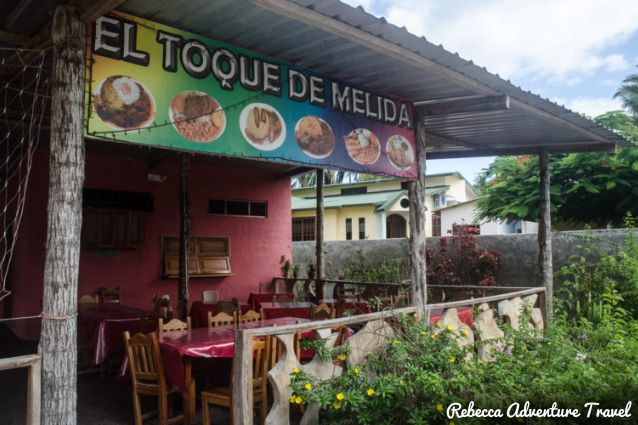
El Toque de Melida Restaurant.
Isabela Grill
At Isabela Grill, both meat and seafood enthusiasts can delight in a memorable dining experience. Indulge in a mouthwatering T-Bone steak, sourced from contented Galapagos cows, or opt for other delectable menu offerings. The portions are generous, ensuring you leave satisfied. If you prefer a lighter option, inquire about their daily dining menu.
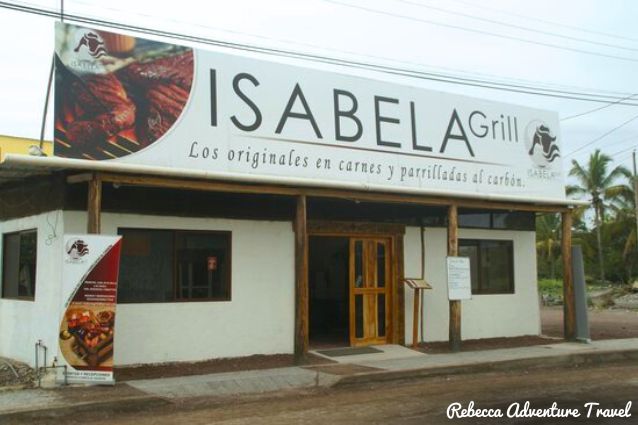
Isabela Grill Restaurant.
Shawarma Hot
For an excellent budget-friendly option on Isabela Island, look no further than Shawarma Hot. This eatery offers an impressive selection of vegetarian and vegan dishes. The friendly service, coupled with their newly renovated dining area upstairs, ensures a satisfying dining experience.
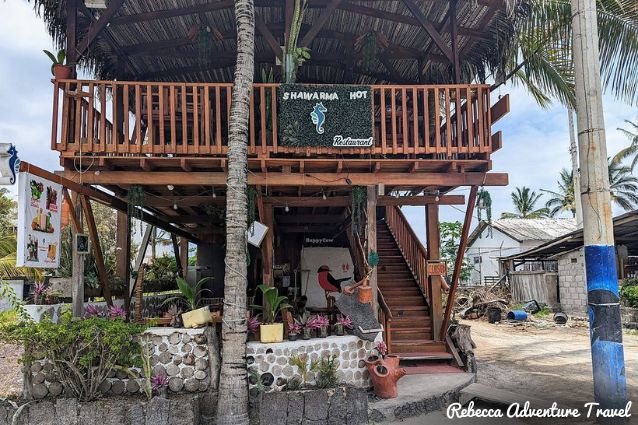
Shawarma Hot Restaurant.
Puerto Villamil and Isabela Island Guide Map – Sites and Restaurants
Contact Information
Should you have any questions or require assistance, please feel free to contact us:
- 24/7 General & Sales Enquiries Phone: +593-(0)980051675
- Office in Quito: +593-(0)2-6007590
On behalf of the entire Rebecca Adventure Travel Team, we wish you an extraordinary time on San Cristobal Island. May your journey be filled with happiness and unforgettable moments.




